Exploring the Kite Vest: A Comprehensive Guide
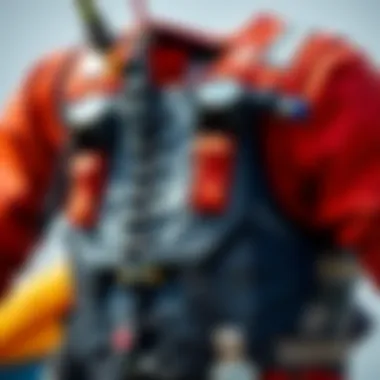
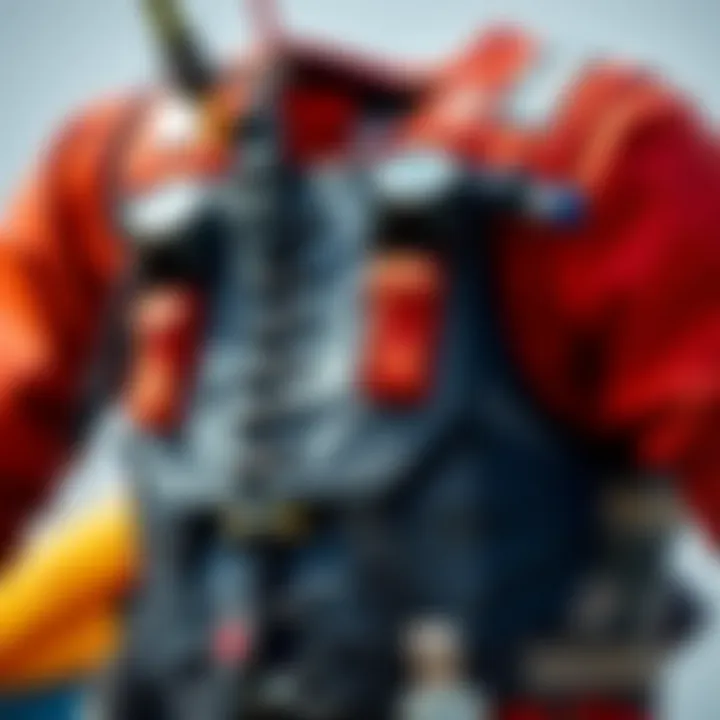
Intro
Kiteboarding is not just a sport; it's an adventure that blends the thrill of water with the artistry of flight. A pivotal aspect of this sport is the kite vest — a piece of equipment that is often overlooked yet integral to both performance and safety. In this guide, we will unravel the layered complexity of kite vests, examining their design, functionality, and overall importance in the kiteboarding ecosystem.
Whether you're a novice trying to catch your first wave or a seasoned rider seeking to push the boundaries, understanding kite vests can elevate your kiteboarding experience. We'll traverse topics from the essential features to look for in a kite vest, innovations in material and fit, and the balance between safety and style. Additionally, we will delve into the maintenance routines and safety protocols that can help safeguard your exhilarating adventures on the water. Let’s dive into the world of kite vests, where safety meets performance, and discover why this gear is a must-have for every kiteboarder.
Gear and Equipment
In kiteboarding, gear selection can make or break your experience. The kite vest, while typically overshadowed by the kite and board, is foundational to your overall kit. It offers essential support, ensuring you can focus on mastering your craft without worrying about discomfort or potential injuries.
Essential Kiteboarding Gear for Beginners
When you're starting out, the last thing you want is to be weighed down with too much gear. However, there are key items that every beginner should have to ensure a smoother learning curve. Beyond the kite vest, here are some core essentials:
- Kite: A suitable kite size for your weight and wind conditions.
- Board: Choose a board that matches your skill level, as this directly affects your performance.
- Harness: A reliable harness is vital for kite control and can make a huge difference in comfort.
- Safety Leash: Always have a leash on hand to securely attach yourself to the kite.
- Life Jacket: If you're in choppy waters, a life jacket can enhance safety in unforeseen circumstances.
Advanced Equipment for Experienced Riders
Once you gain some experience, your equipment can greatly influence your performance. As you evolve in the sport, consider these advanced tools:
- High-Performance Kite Vest: Opt for vests that provide additional impact protection for extreme conditions.
- Custom-Fit Harness: Tailored harnesses can offer improved comfort and enhance performance during those intense rides.
- Wetsuit Technology: Look into neoprene options that offer warmth without sacrificing flexibility, especially in colder climates.
Remember, selecting the right gear is not a one-size-fits-all proposition. It depends not only on your skill level but also on personal preferences and the specific conditions you'll be riding in.
“A kite vest is not merely an accessory; it’s a cornerstone of safety and performance for every kiteboarder.
Prologue to Kite Vests
Kite vests form an essential part of the kiteboarding experience, bridging the gap between safety and performance. For both novices and seasoned kiteboarders, understanding the nuances of these vests can significantly enhance one’s time on the water. As thrilling as kiteboarding can be, it comes with its set of risks, making the right equipment paramount. Kite vests not only cushion against impacts but also provide a layer of buoyancy. This means that as riders navigate the waves, they can focus on mastering tricks or enjoying the ride without constantly worrying about their safety.
Moreover, the design and function of kite vests have vastly improved over the years, making it necessary to explore their various attributes thoroughly. Riders must consider various aspects like fit, material, and safety features. The importance of these elements plays a huge role in decision-making, and understanding them can lead to a safer, more enjoyable kiteboarding experience.
Definition and Purpose
Kite vests are essentially specialized garments designed for kiteboarders to offer protection and support on the water. They typically serve two primary functions: providing buoyancy and protecting the torso from impacts. The buoyancy aspect ensures that in case of a fall, riders have some assistance in staying afloat, which is critical in rough waters. Meanwhile, the impact protection benefits come into play, particularly when riders experience sudden falls or crashes.
Additionally, many kite vests are equipped with various accessories like pockets and attachment points for gear. This allows riders to keep essential items handy while they navigate the waters. In essence, the kite vest is a multi-functional piece of gear, striking a balance between safety and convenience.
The Evolution of the Kite Vest
The journey of the kite vest has witnessed considerable changes, paralleling advancements in kiteboarding technology itself. Initially, these vests were often bulky and cumbersome, providing basic protection without much thought to comfort or mobility. Over time, as the kiteboarding community grew and evolved, so too did the design of these vests.
Modern kite vests now use a variety of advanced materials like neoprene and high-grade nylon, which enhance flexibility without sacrificing durability. This evolution ensures that riders not only enjoy a snug fit but also benefit from lightweight construction, making the vests barely noticeable during intense actions. Today’s vests are more streamlined and tailor-fitted, expanding the range of motion for each rider. Furthermore, with the push for sustainability, many manufacturers now consider eco-friendly materials in crafting their vests, addressing both performance needs and environmental concerns.
The evolution reflects a greater awareness, both of the needs of kiteboarders and the intricacies of the water sports industry. As kiteboarding gains popularity, consumers can expect even more innovations in design and function to meet their requirements in the near future.
Design Elements of Kite Vests
The design elements of kite vests play a significant role in how effectively they serve the needs of kiteboarders. When considering a kite vest, one must look closely at aspects like material construction and the cut and fit of the vest. Each of these elements directly affects not only the safety and comfort of the user but also the overall performance during kiteboarding sessions. Choosing the right design can make the difference between a great experience on the water and an uncomfortable one.
Material Construction
Neoprene
Neoprene stands out as a go-to material for kite vests, primarily due to its buoyancy and flexibility. This synthetic rubber is both water-resistant and provides excellent insulation, making it ideal for water sports. One crucial characteristic of neoprene is its ability to stretch, allowing for a snug yet comfortable fit that doesn't restrict movement. Furthermore, its thermal properties keep the body warm in cooler waters. However, neoprene can become heavy when soaked, which might affect comfort over time during extended use. The positive trade-off with neoprene is its durability, making it a popular choice among kiteboarders who seek both safety and longevity.
Nylon
Nylon is another material commonly used in kite vests, known for its lightweight nature and resistance to abrasion. It provides a more breathable option compared to neoprene, making it a better choice for warmer climates or during hot summer sessions. One of its key features is its quick-drying capability, which ensures that the vest is not only comfortable during riding but also minimizes any after-session discomfort. However, nylon does lack the thermal protection offered by neoprene, which might not be an issue for every environment but is worth considering for cooler regions. Overall, nylon offers kiteboarders a solid balance between comfort and performance.
Polyester
Polyester is renowned for its durability and resistance to fading, thereby maintaining its appearance longer compared to other fabrics. This material is also relatively lightweight, which appeals to kiteboarders who prioritize mobility. One standout feature of polyester is its moisture-wicking properties, keeping the wearer dry even when things get splashy out on the water. Although polyester does not provide insulation as effectively as neoprene, its resistance to water absorption can be an advantage when considering prolonged exposure to wet conditions. Additionally, the ease of care and maintenance associated with polyester makes it an appealing option for many kiteboarders looking for hassle-free upkeep.
Cut and Fit
Slim Fit vs. Loose Fit
The cut and fit of a kite vest can greatly influence performance. A slim fit offers a sleek line that reduces drag while navigating through the water, which some riders may find advantageous for high-speed maneuvers. However, a snug fit might not accommodate layers or additional padding, limiting customization options for certain riders. On the flip side, a loose fit provides greater freedom of movement and airflow. It may come in handy when executing extensive motions, but it can create drag that could slow down performance in competitive contexts. When selecting between the two, individuals should consider their riding style and the type of conditions they frequent.
Impact on Performance
The impact of design on performance cannot be overstated. A well-fitted kite vest—be it slim or loose—can enhance aerodynamics and ergonomics when kiteboarding. Slim fits allow for a close connection to the body and gear, promoting better control, while loose fits might offer versatility for various riding styles. Nonetheless, poor fitting can lead to distractions while on the water. Thus, understanding the contours of one's body and how the vest interacts with movements is vital. Ultimately, achieving a balance between comfort, style, and functionality ensures a kite vest not only meets safety standards but also enhances the rider's overall experience.
Types of Kite Vests
Understanding the different types of kite vests is essential for kiteboarders, whether they’re just starting out or have a few seasons under their belt. The right vest not only enhances safety but also plays a significant role in performance. Each type of vest is geared towards specific needs, making it crucial to know which one suits your riding style and conditions best.
Impact Vests
Impact vests are designed primarily for protection against impacts. They offer a layer of padding that absorbs shock during falls, which is particularly important for those who are mastering tricks or riding in challenging conditions.
- Protection Level: The padding in these vests is generally thicker, giving you that cushion needed to take the sting out of a hard landing.
- Material: Often made from materials like EVA or foam, they ensure comfort while maintaining flexibility. This is important since kiteboarding can require a wide range of movement.
Professionals in the community often recommend impact vests for riders pushing their limits. They help in reducing the fear of falling, which can improve confidence and performance over time. Yet, bear in mind that while they provide excellent protection, they may feel a bit bulkier than other types.
"Choosing the right impact vest can enhance your safety as well as allow you to focus on your skills rather than worrying about injuries."
Buoyancy Vests
Buoyancy vests are an excellent choice for riders who prioritize flotation along with maneuverability. These vests are usually equipped with flotation devices that help keep the rider afloat, which can be crucial in the event of a wipeout.
- Flotation Properties: Buoyancy vests contain foam or air pockets that ensure you stay buoyant if you fall into the water. This can be a lifesaver, especially for beginners who may not yet be confident in their swimming skills.
- Versatility: Many buoyancy vests are designed to allow freedom of movement, so your performance won't be bogged down by excess fabric or weight.
These vests are especially suitable for anyone who’s still learning the ropes or for kiteboarders riding in conditions where the risk of unexpected falls is high.
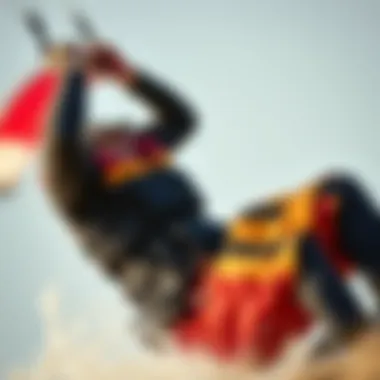
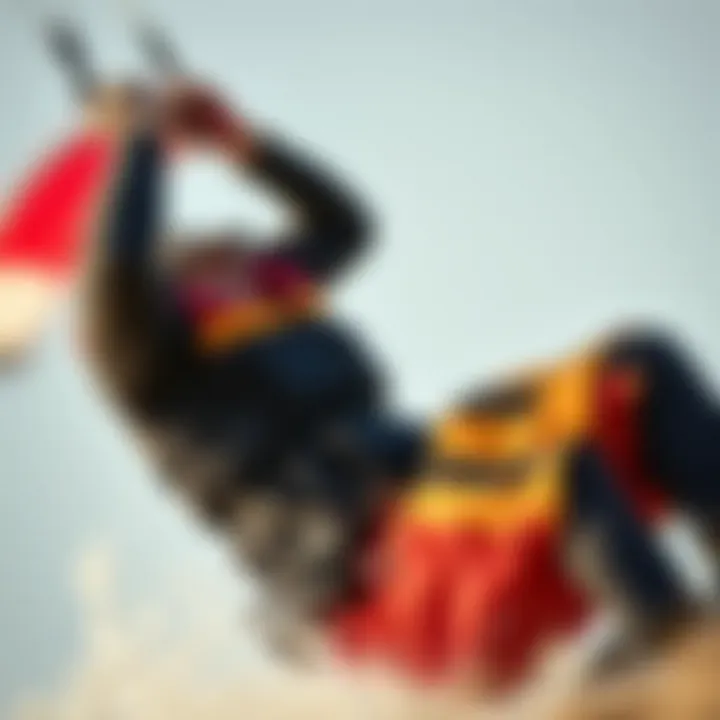
Hybrid Vests
Hybrid vests blend the features of both impact vests and buoyancy vests. They aim to offer a compromise between buoyancy and impact protection, making them a versatile option for many kiteboarders.
- Best of Both Worlds: Riders looking for security but also needing some buoyancy can find hybrid vests an excellent choice. They provide that extra protection from impacts while still ensuring you won’t sink like a stone in the water.
- Adaptability: These vests can adapt to various styles of riding. Whether you’re jumping waves or cruising flat water, a hybrid vest likely has you covered.
However, it’s important to check the specifics. Not all hybrid vests offer equal protection or flotation. Doing your homework before making a choice is essential to finding the best fit for your style.
By familiarizing yourself with these types of kite vests, you can make a more informed choice that not only keeps you safe but also enhances your overall kiteboarding experience.
Functionality of Kite Vests
The functionality of kite vests is a critical aspect to consider for any kiteboarder. These vests serve multiple purposes that ultimately enhance performance and safety on the water. Kite vests are designed to provide support and protection, allowing riders to focus on their skills and enjoyment. When assessing the functionality of kite vests, it’s good to examine crucial elements like safety features, buoyancy, and storage capabilities, which not only enrich the kiteboarding experience but also address various practical needs of the riders.
Safety Features
Impact Protection
Impact protection stands as one of the most important features of kite vests. It refers to the vests' ability to absorb and distribute the force of any impacts that may occur while riding. This characteristic is especially beneficial during falls and crashes, as it can significantly reduce the risk of injury. The materials used in crafting vests often include high-density foams or specialized padding that conform to the body's shape, providing a snug fit while safeguarding vital areas like the ribs and spine.
One noteworthy aspect of impact protection is the style of the vest. Certain designs incorporate more robust padding in specific regions, catering to those who engage in more extreme maneuvers. This specialization makes them a popular choice for riders who frequently push their limits.
However, it’s essential to balance protection with comfort since overly rigid materials may hinder mobility. Riders often have to consider what kind of trade-offs they're willing to make based on their riding style and conditions.
Buoyancy Assistance
Buoyancy assistance is another paramount feature found in kite vests. Essentially, this involves incorporated flotation devices that aid in keeping the rider afloat, especially during emergencies. This feature instills a level of confidence in users while navigating the waters, providing reassurance that, should they find themselves in a precarious situation, they won’t sink like a stone.
The buoyancy provided by these vests come from various materials, such as closed-cell foam, which is lightweight yet effective.
While buoyancy assistance enhances safety, it's important to note that vests with a higher buoyancy rating can be bulkier, potentially impeding performance in terms of agility. Thus, it is vital to identify the right balance of buoyancy in accordance with individual proficiency and preferences in kiteboarding.
Additional Capabilities
Storage Solutions
The storage capabilities of kite vests are another factor that adds to their functionality. Many vests are designed with pockets or compartments where kiteboarders can stow away essentials like keys, a small first-aid kit, or a GoPro camera. This organization is particularly helpful for those wishing to carry items without needing a separate bag.
What’s distinctive about these storage options is their placement. Designers often place pockets in a manner that doesn’t interfere with the rider's movements.
While the added storage is incredibly convenient, it’s imperative to note that excessive weight from carrying too many items can alter the vest's performance in the water. Users must find a balance between having enough storage and maintaining optimal buoyancy.
Attachment Points
Attachment points serve as yet another practical feature in kite vests. These points allow riders to tether various items, such as leash cords or hydration packs, directly to their vests, rendering an extremely efficient way to keep gear within reach during rides.
The unique advantages of having secure attachment points include easy access and less likelihood of losing equipment in the water.
On the flip side, riders should be cautious about what they attach. Overloading can lead to excess weight or dangling gear that may interfere with kiteboarding maneuvers. As a result, it's always wise for riders to consider their specific needs and preferences before opting for a vest with a plethora of attachment points.
Advantages of Using a Kite Vest
Kite vests are more than just an accessory; they play a critical role in enhancing the kiteboarding experience. Understanding the advantages of these vests is crucial for anyone who enjoys the thrill of riding the wind and water. Not only do these vests provide extra safety, but they also offer distinct performance improvements that can make a real difference in your time on the water. From the beginner just starting out to the seasoned pro carving down the waves, the benefits of kite vests are significant in enhancing both safety and performance.
Enhanced Safety
Safety is non-negotiable in kiteboarding, and that’s where kite vests prove their worth. The designed protection these vests provide is a fundamental reason many individuals opt to wear them during their sessions,
- Impact Protection: Kiteboarding can be exhilarating, but it comes with its share of risks. Whether you’re crashing during a trick or being knocked by the kite, the impact protection that a kite vest offers can be a lifesaver. With padding in key areas, they absorb some of the force, reducing the chance of injury significantly. This added layer of cushioning fosters more confidence to take risks and try new maneuvers, knowing you have some protection in case things go sideways.
- Buoyancy Assistance: Another safety feature that comes with many kite vests is buoyancy. In the event of a fall, a vest can help keep you afloat. This is particularly crucial in strong winds or rough waters, where maintaining above-water stability can be a challenge. Being able to float gives kiteboarders a chance to recover and gather themselves after a tumble without panicking.
"A kite vest is like a safety net – you might not need it all the time, but when you do, you’re glad it’s there."
Improved Performance
Performance is not just about having the right skills; the gear you wear plays an essential role too. The kite vest directly impacts how you perform on the water, facilitating a balance between comfort and functionality.
- Freedom of Movement: Although some might worry that a vest could hinder movement, many modern kite vests are designed with flexibility and agility in mind. A well-fitted vest allows you to twist and turn while controlling the kite, vital for executing tricks. The cut and style of the vest can enhance your overall comfort and responsiveness, making radical maneuvers easier.
- Streamlined Design: Kite vests often feature a sleek design that reduces drag. This streamlined build ensures that you cut through the water more efficiently, allowing you to maintain speed and control. This efficiency becomes apparent, especially in competitive settings, where even a slight difference in drag can affect your performance on the water.
- Temperature Regulation: Many kite vests are constructed using materials that help regulate body temperature. This helps maintain optimal performance during extended sessions, preventing overheating or excessive cooling, which could distract you from your ride. With the right kite vest, you can stay focused on the waves rather than how chilly or hot you feel.
Disadvantages of Kite Vests
While kite vests have numerous advantages, it's crucial to delve into their disadvantages to make informed choices. Understanding the drawbacks not only fosters better decision-making but also helps kiteboarders manage their riding experience effectively. Here, we focus on two primary concerns: restrictive movement and weight considerations.
Restrictive Movement
One of the main complaints among kiteboarders about kite vests is the restriction they can impose on movement. A vest that fits snugly might be a double-edged sword; it offers safety but can inhibit natural motion, especially when performing tricks or making sharp turns. This tight fit might feel comfortable on calm days but can quickly become constraining when the wind picks up or during intense maneuvers.
Many riders trust their instincts and rely on a sense of freedom in their bodies when navigating the waters. If the vest limits movements, it might affect performance, leading to slower reactions or less precise techniques. In certain scenarios, this can be a significant downside, particularly for those looking to push their skills or those who thrive on agility. As a result, kiteboarders often need to find a balance between the protection the vest offers and the freedom required for optimal performance.
Weight Considerations
Weight is another significant factor to consider. Kite vests vary in weight depending on the materials used and the level of protection they provide. Heavier vests might offer better impact protection but can feel cumbersome, especially when out on the water for extended periods. This weight might not only affect buoyancy but also overall stamina.
When a kiteboarder chooses a heavy vest, they may find themselves adjusting their body posture or even their riding style to accommodate the extra lbs. This can lead to unnecessary fatigue, particularly on long sessions. Also, in conditions where the water is choppy, the additional weight can be more than just a nuisance; it could mean the difference between making a slick move and taking a tumble.
"The right vest should feel like a second skin, not a lead weight. Finding that balance is key."
Culmination
Choosing the Right Kite Vest
Selecting the appropriate kite vest is crucial for kiteboarders, whether they are seasoned pros or just starting out. The right vest not only provides protection but can also significantly enhance performance on the water. Understanding what to look for in a kite vest involves examining various elements such as skill level and the type of kiteboarding being practiced. By aligning these factors with personal comfort, kiteboarders can make an educated decision that suits their unique needs.
Key Factors to Consider
Skill Level

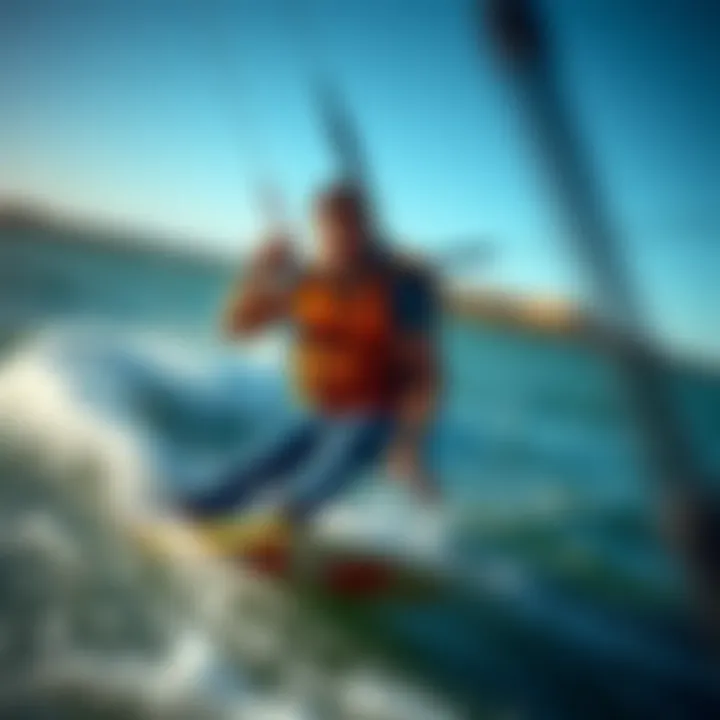
When it comes to skill level, it's essential to recognize how this impacts the kind of vest one should choose. Beginners often prioritize safety features over performance, as they may be prone to falls and other mishaps while mastering the basics of kiteboarding. A vest designed for novices might offer more buoyancy and protection, potentially leading to a more enjoyable experience as they learn.
On the other hand, experienced kiteboarders may opt for vests that enhance their agility. They generally look for a slimmer profile that allows for greater freedom of movement. This choice is popular because it minimizes drag while maximizing the ability to maneuver effectively.
In summary, evaluating one's skill level helps determine whether to prioritize safety features or performance enhancements when selecting a kite vest. This decision can have a significant effect on overall comfort and confidence while riding.
Type of Kiteboarding
The type of kiteboarding can also guide the decision in choosing a kite vest. For instance, those engaging in freestyle kiteboarding might benefit from a vest that provides impact protection to absorb the shock of jumps and tricks. The unique feature here lies in the additional cushioning materials designed for high-impact activities, which can prevent injuries to vital areas during falls.
Conversely, those who participate in wave riding may lean towards vests that are less bulky, prioritizing agility and streamlined shapes. It’s essential to focus on how the vest interacts with the kiteboarding style. This way, individuals can balance protection with flexibility that suits their surfing preferences.
Choosing the right vest ultimately boils down to understanding the nuances of one’s kiteboarding style and matching that with the vest’s specifications for optimal performance.
Fit and Comfort
The fit and comfort of a kite vest hold equal importance. A vest that fits well can prevent chafing and discomfort during long sessions on the water. The right fit allows for a full range of motion, essential for executing maneuvers. Additionally, a comfortable vest tends to encourage longer and more enjoyable sessions without the nagging feeling of restricting gear.
Customization Options
When it comes to kite vests, customization plays a vital role in ensuring that every kiteboarder finds their perfect fit. A kite vest is not just a piece of equipment; it’s an extension of a rider’s body language on the water. Tailoring a kite vest to fit personal preferences and specifications enhances comfort and can even improve performance.
Customization can significantly affect key factors such as fit, functionality, and aesthetic appeal. Every kiteboarder is unique, with different body shapes, riding styles, and visual tastes. Selecting the right options allows users to blend their individual preferences into their gear. For instance, adjusting aspects like the vest’s cut can cater to a rider's agility or the need to prioritize safety features. Moreover, a properly fitted vest can alleviate discomfort, preventing distractions when you’re out on the waves.
Tailoring for Individual Needs
Tailoring a kite vest begins with understanding your specific needs as a kiteboarder. The market offers various options, but customizing ensures that the vest suits your personal riding style. Here are a few considerations:
- Body Shape and Size: Tailoring choices can include selecting vests that address diverse body shapes. Whether someone is slim, athletic, or has a more robust build, vests can be adjusted for optimal comfort and snugness, which is crucial for safety during high-speed maneuvers.
- Specific Riding Style: Different kiteboarding styles such as freestyle, wave riding, or racing may necessitate unique vest features. For example, a freestyle rider might prefer a vest that provides significant impact protection while still allowing for easy movement, while a wave rider may benefit from a lighter vest that offers more freedom.
- Comfort Level: Fabrics, padding, and the overall structure of the vest can be altered. Investing in materials that suit individual preferences—such as breathable fabrics for those hot summer days or added insulation for colder climates—makes a considerable difference.
Customizing your kite vest may seem like just a small detail, but it can elevate your overall experience on the water.
Brands Offering Custom Vests
A variety of brands now provide options for kiteboarders looking to customize their vests. Notable names in this sphere include:
- Mystic Kiteboarding: Their custom vest options allow for various sizes and color schemes, ensuring that riders not only feel good but look good too.
- Cabrinha: This brand emphasizes functionality in their vest design. Custom features might include slots for personal flotation devices and attachment points for accessories.
- Ozone: Known for their innovative designs, Ozone offers customization options focusing on enhancing aerodynamic performance, which many serious kiteboarders might find appealing.
- Ion: They provide tailored fits and various options for adjusting padding and buoyancy, catering to specific needs without compromising safety standards.
These brands exemplify how customization in kite vests can lead to better performance and personalized comfort. With every adventure, riders can feel confident that their equipment reflects who they are while optimizing safety during their exhilarating rides.
"Investing in a personalized kite vest isn’t just about style; it’s about optimizing your entire kiteboarding experience."
As kiteboarding continues to evolve, so too will the potential for customization, reflecting the dynamic nature of the sport itself.
Maintenance and Care for Kite Vests
Proper maintenance and care of kite vests cannot be overstated. They are not just garments; they play a critical role in ensuring safety and performance on the water. Over time, exposure to salt, sunscreen, and general wear and tear can compromise the integrity of your vest. Neglecting care routines can lead to early degradation, adversely affecting flotation and protection. For kiteboarders, understanding maintenance practices extends the life of their equipment, enhances functionality, and ensures peace of mind while riding.
Cleaning Guidelines
Keeping a kite vest clean is essential for maintaining its longevity and effectiveness. Saltwater and sand can create wear marks over time. Here’s how to do it right:
- Rinse After Use: Always rinse the vest with fresh water immediately after a kiteboarding session. This simple act removes salt and sand that can damage materials.
- Gentle Cleaning: For a deeper clean, fill a bathtub or bucket with lukewarm water and a mild detergent. Avoid fabric softeners as they can affect buoyancy.
- Hand Wash Only: While it might be tempting to toss it in a washing machine, hand washing is always preferred. Use a soft cloth or sponge to gently scrub any stubborn spots without risking fabric damage.
Tip: It’s wise to turn the vest inside out during cleaning to protect the exterior and any added features.
- Thorough Rinsing: After washing, make sure to rinse the vest thoroughly to remove any soap residue, as this can attract dirt and grime.
- Air Drying: Finally, let the vest air dry away from direct sunlight and heat sources. Hanging it on a line or laying it flat ensures a shape preservation.
Storage Solutions
How you store your kite vest also impacts its lifespan. Proper storage helps prevent deformities, fading, and other forms of degradation. Here are some effective methods:
- Cool, Dry Place: Store your vest in a cool, dry spot away from direct sunlight. This guards against materials breaking down over time.
- Avoid Folding: Hanging is always better than folding, as folds can create creases that break down material fibers.
- Use a Garment Bag: Consider placing the vest in a breathable garment bag to protect it from dust while allowing airflow.
- Check for Moisture: Ensure the vest is completely dry before putting it in storage. Any trapped moisture can lead to mold or mildew, creating an unhealthy situation.
- Seasonal Check-ups: If not used for a while, make it a point to check the vest periodically. This way, any minor issues can be addressed before the next kiteboarding adventure.
Integrating the Kite Vest into Your Gear
When it comes to kiteboarding, having the right gear is essential. Among the various components, the kite vest plays a pivotal role. It’s not just about staying afloat; it’s about enhancing your experience on the water. Integrating the kite vest into your setup involves understanding how it interacts with other equipment and how to ensure it’s secure and functional while you ride.
Compatibility with Other Equipment
When you’re out kiteboarding, every piece of your gear has to work in harmony. The kite vest isn’t a standalone item; it complements several other components, like your harness, kite, and board. Here’s what to keep in mind regarding compatibility:
- Harness Compatibility: Many riders often combine their kite vest with a harness. It's vital to check the fit between these two. Some vests come with integrated harnesses, while others work best with standalone options. The connection points — how your vest and harness attach to each other — must be compatible to avoid any unsettling adjustments mid-ride.
- Kite Size and Type: The size and type of your kite can also determine how your vest performs. A lightweight vest may suit freestyle kites well, while a more robust option might be better when using larger kites for freerideboarding.
- Safety Gear Integration: Look out for vests that have attachment points for essential safety gear, like whistles or knife sheaths. This ensures that when you're out on the water, everything is just a reach away.
- Inflatable Systems: If you use an inflatable kite, ensure your vest won’t interfere with its operation. Some designs may restrict the inflation mechanism or lead to snagging, which can be a hassle.
Securing Your Kite Vest
Once you have the right gear, the next step is to secure your kite vest properly. An ill-fitted vest can be uncomfortable and even hazardous when you’re out on the waves. Here are some tips to make sure your vest stays in place:
- Straps and Adjustments: Ensure all straps are snug but not constricting. Many vests come with adjustable buckles or Velcro straps. The key here is finding that sweet spot where it's secure enough to stay put during twists and tumbles, but allows for freedom of movement.
- Test before You Ride: Before heading into the water, take a moment to leap, twist, and make some quick movements while wearing your vest. This brief test run can help in identifying if it moves around too much or if it’s too loose.
- Layering Considerations: If you're layering clothing beneath your vest, like a wetsuit, make sure it’s all snug yet level. Sometimes clothing can bunch up, making the vest feel unbalanced.
Integrating the kite vest into your gear doesn’t have to be a daunting process. A few practical considerations not only enhance your experience but can significantly impact your performance as well. By being aware of compatibility and securing your vest effectively, you’re setting yourself up for a smoother ride and more enjoyable time on the water.
Future Trends in Kite Vest Technology
As kiteboarding has gained traction worldwide, kite vest technology is also keeping in step with evolving demands. These advancements aim to enhance user experience, safety, and performance in various conditions. For beginners and seasoned kiteboarders alike, staying informed about these trends is crucial, ensuring that their choice of gear keeps pace with innovations.
Emerging Innovations
Innovation in kite vests is not just about flashy new designs; it’s about enhancing in-the-water functionality. Here are a few pivotal advancements to look out for:
- Smart Technology Integration: Some companies are moving towards incorporating sensors that track performance and vitals. Imagine a vest that provides real-time feedback on your heart rate, or even alerts you to changes in weather conditions via a connected app.
- Modular Designs: New vest designs are also allowing for customizable configurations. Kite vests with detachable and interchangeable components could pave the way for a tailored experience, adapting to a kiter's specific needs, be it a calmer day at the beach or an adrenaline-pumping session.
- Enhanced Impact Absorption: Various manufacturers are experimenting with innovative foam technologies that could offer better shock absorption without compromising buoyancy. This means less risk for injuries while providing essential support for maneuverability.
This headway allows for a more personalized kiteboarding experience, from beginners looking for fundamental safety to professionals seeking peak performance.
Sustainability in Materials
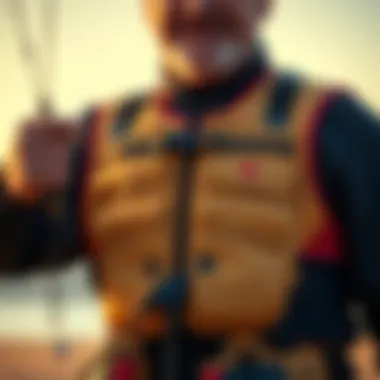
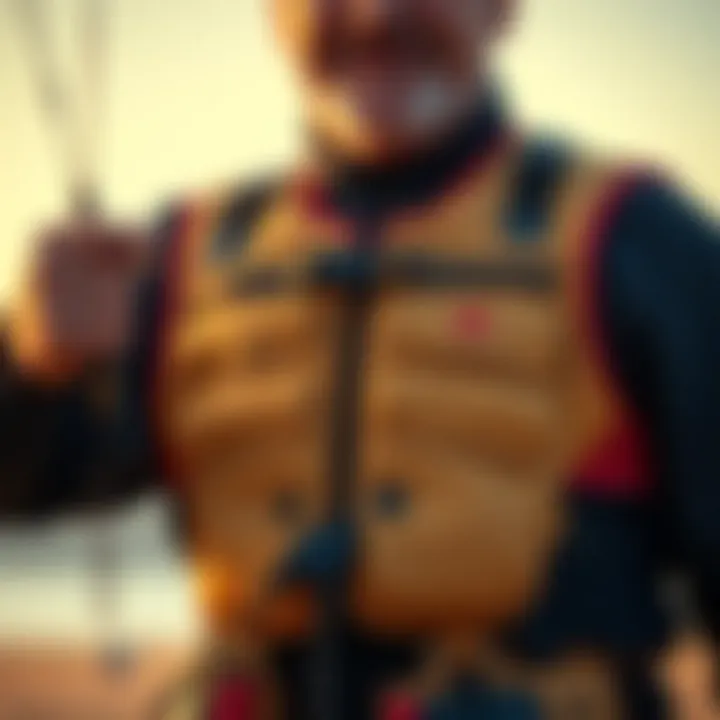
With increasing attention on environmental impact, the kiteboarding community is beginning to embrace sustainability in manufacturing processes. Here’s how the industry is pivoting:
- Recycled Materials: There’s a steady move toward using recycled plastics and textiles in kite vest production. Brands are starting to source materials that can be repurposed, thus reducing waste in the production cycle.
- Biodegradable Fabrics: Emerging companies introduce biodegradable materials that can decompose over time, minimizing the long-term footprint of each vest.
- Sustainable Manufacturing Practices: Brands are revising their manufacturing processes to reduce their carbon emissions and energy consumption, aligning production with eco-friendly guidelines.
By focusing on sustainable materials and practices, the kite vest community not only champions environmental responsibility but also appeals to a growing demographic concerned about climate change.
As kite vests evolve, the importance of these advancements plays a significant role in enhancing the overall kiteboarding experience. By staying abreast of emerging innovations and sustainability trends, kiteboarders can equip themselves with gear that not only performs exceptionally but also adheres to eco-conscious values.
Safety Protocols for Kite Vest Use
Safety should always take precedence in any sport, but kiteboarding brings its own twists to the table. Kite vest usage is closely intertwined with these safety protocols, ensuring not just an enjoyable experience, but a safe one. Proper usage of kite vests can be the difference between a thrilling ride and a catastrophic mishap. These protocols encompass vital pre-flight checks and emergency procedures, which every kiteboarder, whether a novice or a seasoned expert, should master.
Pre-Flight Checks
Before taking to the water, it’s crucial to perform thorough pre-flight checks on your kite vest, as well as other gear. The aim is to ensure everything is in top form so that safety is not compromised. Here are some essential checks:
- Inspecting the Vest: Look for any visible tears, worn areas, or damage in your kite vest. If anything seems off, it’s best to either repair or replace it.
- Straps and Buckles: Make sure that all straps are secure and buckles function smoothly. A faulty strap can be your nemesis in an emergency.
- Buoyancy: Check if your vest provides adequate buoyancy. This is particularly significant if you’re going into choppy waters or are venturing far from the shore.
- Fit: The vest should fit snugly, but not too tight. A good fit ensures safety while allowing for enough mobility, which is vital when you’re out harnessing the wind.
Performing these checks can save you not only injuries but could very well save your life. Think of it this way: better safe than sorry.
Emergency Procedures
Even the best of plans can go awry, and that’s where knowing what to do in an emergency can make all the difference. Having a solid emergency procedure can help you stabilize a situation before it escalates. Here’s how to handle an emergency when kiteboarding:
- Know Your Escape Routes: Familiarize yourself with nearby safe landing spots. If something goes wrong, being aware of your surroundings can save you precious time.
- Emergency Signaling: If you’re in trouble, understanding how to signal for help can lead to a quicker rescue. Flapping your arms or using a whistle can attract attention.
- Self-Rescue Techniques: Knowing how to perform self-rescue is invaluable. This includes how to use your kite to wind drift back to shore and getting back on a board after a spill.
- Communication: Always ensure someone on land is aware of your sail plan and et your return time. This way, should you not return as expected, they can alert the appropriate help.
"Preparedness is the first step towards safety. Always expect the unexpected."
In summary, the safety protocols for kite vest use serve as your safeguard against mishaps and help create a safe environment to enjoy the thrilling experience of kiteboarding. Constantly reviewing and practicing these two aspects—pre-flight checks and emergency procedures—can significantly lower the risk of accidents, enhancing both your confidence and ability to enjoy the sport to its fullest.
Kite Vest Legislation and Regulations
Understanding the legislation and regulations surrounding kite vests is crucial for anyone involved in kiteboarding. These laws help ensure not only individual safety but also promote a standardized level of quality and performance in the equipment used by kiteboarders worldwide. The kiteboarding community is diverse, with participants from various backgrounds, thus making compliance with regulations all the more significant. This section explores the global standards as well as local compliance requirements pertaining to kite vests, providing kiteboarders with the necessary insight to navigate this complex landscape.
Global Standards
Global standards for kite vests are established to ensure safety and efficiency while navigating the water. These standards are often put in place by organizations such as the International Kiteboarding Organization (IKO) and other governing bodies tailored to water sports. Key elements commonly found in these global standards include:
- Safety ratings that classify vests based on their protective features, such as impact resistance and buoyancy.
- Material specifications dictating the use of specific fabric types that can withstand the harsh conditions faced by kiteboarders.
- Design requirements which include stipulations on mobility and fit, addressing the need for a vest that allows for optimal movement while still providing protection.
Kite vests that meet these criteria are often tested rigorously to ensure they perform well in various conditions, giving kiteboarders peace of mind that their gear is reliable. It’s vital to look for vests that specifically state they adhere to these international regulations, as it can define the quality of your experience on the water.
"Regulatory compliance often turns a good ride into an extraordinary one, allowing athletes to focus on their skills rather than worrying about safety."
Local Compliance
While global standards lay the groundwork, local compliance takes these regulations a step further. Each region may have specific requirements based on local water conditions, common risks, and demographic factors that affect how kiteboarding is practiced. Considerations for local compliance include:
- Age and experience requirements, particularly for rentals and competitions, ensuring that individuals using specific vests are adequately skilled before taking to the water.
- Environmental regulations that dictate which materials are acceptable, minimizing the ecological footprint of kiteboarding gear.
- Insurance stipulations, which may require that vests used in commercial settings (such as schools) meet specific standards to protect operators and ensure participant safety.
By understanding and adhering to local compliance, kiteboarders can ensure not only their safety but also contribute to a culture of responsibility within the sport. Compliance with these regulations fosters a sense of community and helps in maintaining respect for both the sport and the natural environment where it takes place.
In summary, legislation and regulations in kite vest usage play a pivotal role in promoting safety and quality standards across the kiteboarding community. From global specifications to local nuances, kitesurfers must navigate these guidelines to ensure they are well-prepared every time they hit the waves.
Community Perspectives on Kite Vests
The role of community insights in kiteboarding can't be overstated. Kite vests, while technical, are also deeply personal and subjective in their impact on performance and comfort. When individuals from both professional and amateur spheres come together to share their experiences, the conversation grows richer, and nuances emerge that may not be captured in product descriptions alone.
This section aims to shed light on the varied perspectives within the kiteboarding community, emphasizing the importance of both professional input and hobbyist experiences. Understanding these viewpoints can greatly influence decision-making when it comes to selecting and using kite vests.
Insight from Professionals
Professional kiteboarders often have a wealth of knowledge stemming from years of experience on the water. Their feedback typically revolves around performance capabilities and safety features that could greatly affect competitive outcomes. Many professionals focus on how the fit and construction of the vest can either enhance or inhibit their movement during maneuvers. A snug and well-fitted vest is often preferred, as it minimizes drag and maximizes aerodynamics.
Furthermore, seasoned riders frequently discuss the importance of buoyancy and impact protection in various conditions. Many highlight how they select vests based on the type of kiteboarding they are engaging in, whether it's freestyle, wave riding, or something else altogether. They often urge newcomers to refer to specific materials, such as neoprene vs. polyester, which can significantly influence performance under stress.
"It’s not just about wearing something for safety; the right vest gives you confidence to really push your limits," says a notable pro rider.
They also emphasize the importance of research and trying vests with varying features before making a purchase, ensuring that the choices align with one's goals and skill level.
Feedback from Hobbyists
On the flip side, hobbyists bring a different perspective to kite vests. Often, they are more focused on comfort, price, and customization options. Feedback from the general kiteboarding community sheds light on how essential it is for kite vests to offer a balance between protection and comfort. Many hobbyists might find themselves prioritizing features like storage solutions for essentials such as keys or a phone, as opposed to high-performance technical aspects.
Additionally, reviews on online platforms often reveal a shared sentiment that budget plays a pivotal role in their decision-making process. They typically discuss whether the investment in a high-end vest is justified, especially if their kiteboarding experience remains relatively casual. Many also engage in sharing personal anecdotes about how a poorly fitting vest affected their enjoyment on the water, illustrating that even the small details can make a significant difference.
Circling around the community, it’s common to find discussions on forums such as Reddit where both professional and hobbyist voices come together. Here’s where valuable conversations often take place about brand comparisons and real-world performance, allowing for a plethora of insights that benefit everyone in the kiteboarding realm.
Culmination
The significance of kite vests within the realm of kiteboarding can't be overstated. They are not merely accessories, but essential elements that enhance both performance and safety on the water. Kite vests serve several critical functions, from providing buoyancy to protecting against impacts, making them invaluable for riders of all skill levels.
The Role of Kite Vests in Kiteboarding
Kite vests play a pivotal role in ensuring that a kiteboarder’s experience is as safe as possible. These vests often integrate advanced safety features like impact protection and buoyancy assistance. This means that whether you’re a seasoned pro tackling challenging waves or a novice just getting your feet wet, a kite vest can be a real lifesaver.
Moreover, the design of these vests typically includes multiple attachment points for securing various gear, making them versatile. A kite vest isn’t just functional; it can also be tailored to meet personal preferences. Riders can choose from different cuts and materials, ensuring that their vest complements their unique riding style.
Additionally, there’s a psychological aspect to wearing a kite vest. Knowing that you have extra protection and buoyancy can boost a rider's confidence, encouraging them to push their limits while navigating the dynamic challenges of kiteboarding.
Final Thoughts
Kite vests serve more than just a single purpose; they are integrative components that enhance the overall kiteboarding experience. Investing in a quality kite vest is wise, as it can provide crucial protection and aid in performance.
As kiteboarding continues to evolve, so do kite vest designs and technologies, paving the way for even greater advancements in safety and comfort.
In summary, understanding the multifaceted benefits of kite vests can lead to better decision-making for kiteboarders, whether they are shopping for their first vest or upgrading an existing one. Emphasizing safety and performance can make all the difference in an enjoyable kiteboarding experience.
Kite vests are not only about safety; they embody the spirit of kiteboarding by merging performance, style, and protection into one essential piece of gear.
For more information on kiteboarding safety protocols and equipment, consider visiting Reddit - Kiteboarding or Wikipedia - Kiteboarding.



